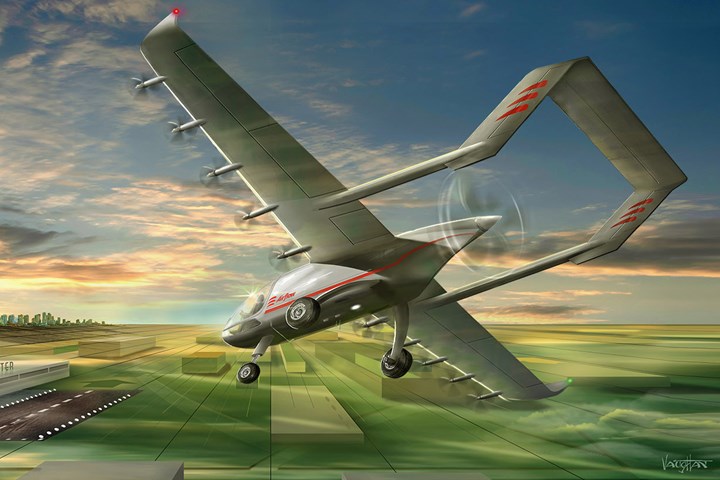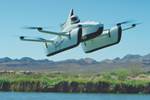Electric short takeoff & landing aircraft addresses e-commerce needs
California-based Airflow's eSTOL aircraft promises cost-effective, rapid delivery of cargo within a distance range of 50-200 miles.

Source | Airflow
Founded in 2019 by five former Airbus Vahana team members, aerial logistics company Airflow (San Francisco, Calif., U.S.) announced on June 10 that it is developing what it says is the first electric short take-off and landing (eSTOL) aircraft designed for “middle-mile” distances of between 50-200 miles. The company’s eSTOL aircraft, which is said to require less than 150 feet to take off and landing using a 300-foot runway, will be used to move short-haul cargo quickly and cost-effectively within cities.
Airflow was founded with the idea that eSTOL aircraft could address the urban air mobility (UAM) market for one-third the operating cost of electric vertical take-off and landing (eVTOL) aircraft. In addition, the company says that there is growth in the need for middle-mile capabilities due to e-commerce deliveries, as well as the rapid delivery of time-sensitive medical supplies and cargo directly between warehouses.
“The demand for same-day e-commerce continues to rise, and we’re building a new low-cost aerial capability to enable that growth.”
Airflow says its first eSTOL aircraft includes an electric propulsion system, single-pilot operations and the ability to carry 500 pounds of cargo. This aircraft is a relatively simple fixed-wing aircraft, which the company says will dramatically reduce development and certification risk when compared with more complex aircraft.
From a certification standpoint, eSTOL aircraft are conventional aircraft with new technology that is focused on enabling short-field capabilities. eSTOL aircraft can be certified under standard Part 23 regulations, whereas, according to Airflow, eVTOL aircraft must be certified using a more complicated and expensive process due to their more complex systems and potential failure modes.
“The demand for same-day e-commerce continues to rise, and we’re building a new low-cost aerial capability to enable that growth,” says Marc Ausman, Airflow’s co-founder and CEO. “Our approach from the beginning is to focus on a simple aircraft design with well-defined new technology. In doing so, the team believes development and certification costs will be approximately $200 million versus more than $700 million for an eVTOL aircraft, making for more efficient use of capital.”
Related Content
-
Airbus debuts CityAirbus NextGen eVTOL prototype
Unveiling coincided with the opening of the new CityAirbus test center in Donauwörth, Germany, ahead of the aircraft’s maiden flight later this year.
-
How composites have become a necessity
Composites used to be one of many material options across industries and applications, but that's not the case anymore.
-
Lilium begins Lilium Jet aircraft production
Following DOA approval, Lilium shifts from the design phase to industrialization, including fuselage matching and joining and a ramp-up of parts production from Tier 1 aerospace suppliers.

.jpg;width=70;height=70;mode=crop)














